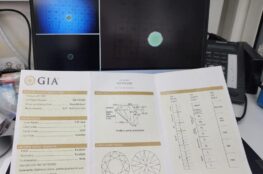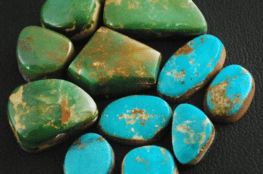Introduction: A Gem Steeped in History
Almandine Garnet, known for its deep brownish to purplish-red hues, is a gemstone that has been cherished for centuries. As a variety of garnet, Almandine is a silicate of iron and aluminum and boasts a significant hardness of 7-7.5 on the Mohs scale, making it an excellent choice for jewelry. Its rich color and historical significance make it a gemstone that continues to capture hearts.

The Rich Palette of Almandine
Almandine Garnet is characterized by its deep red color, which can sometimes appear almost black in certain lighting conditions. However, when viewed under bright light, the gemstone reveals a stunning dark red shade that is both intense and vibrant. Almandine is the most common garnet and is often dark in tone. The depth of its color makes it a popular choice for those seeking a gemstone with a rich and opulent appearance. Additionally, Almandine can exhibit purplish-red, wine red, and even purple colors, adding to its allure.
Historical Significance and Ancient Roots
The name “Almandine” is derived from the ancient town of Alabanda in Asia Minor, where these garnets were historically cut and traded. Almandine Garnets have been used for centuries in various forms of jewelry and adornment. The Ancient Egyptians used Almandines in jewelry as early as 3,500 BCE. The Classical Roman scholar Pliny the Elder referred to the finest red gemstones with “brilliancy like fire” as carbunculus, which included Almandines as well as red spinels and rubies. The term “carbuncle” persisted into the 19th century, referring to cabochon-cut red gems, most commonly Almandine Garnets.

Formation, Composition, and Sources
Almandine Garnet is typically found in metamorphic rocks and is formed under high pressure and temperature conditions within the Earth’s crust. It is an iron-dominant garnet and often occurs in series with other garnet species, such as pyrope and spessartine. Major sources of Almandine Garnets include India, Madagascar, Sri Lanka, and the United States. Other sources include Brazil, Afghanistan, Austria, Canada, Czech Republic, Ethiopia, Greenland, Japan, Kenya, Mozambique, Myanmar, Norway, Pakistan, Russia, Solomon Islands, Sweden, Tanzania, Uruguay, Vietnam, and Zambia.


Price Considerations and Market Dynamics
Almandine is one of the more affordable garnet species due to its abundance and occurrence worldwide. The price primarily depends on color, with the deep red and purplish-red stones being more valuable. The size of the gemstonealso plays a role in its price, with larger stones commanding higher prices. However, due to the abundance of Almandine, there is no need to overpay for pieces with noticeable inclusions or inferior cuts. The purplish-red Almandine-pyrope blend known as Rhodolite is an exception, as it generally fetches higher prices due to its unique color.
Inclusions and Optical Properties
Almandine Garnets are usually eye-clean, but faceted Almandines may contain a variety of inclusions, often visible only under magnification. Although isometric like all garnets, Almandines may show anomalous double refraction (ADR) due to strain. The gemstone’s microscopic inclusions, such as silk, may become visible often only under magnification.
Care and Maintenance
Despite their durability, Almandine Garnets can be sensitive to high heat. Inclusions are prone to grow and render them susceptible to damage in ultrasonic cleaners that are extremely hot. Therefore, cleaning should be gentle, using a soft brush, mild detergent, and warm water.
Conclusion: The Enduring Allure of Almandine Garnet
With its deep, rich colors, historical significance, and durability, Almandine Garnet remains a gemstone that is cherished and sought after. Its natural beauty and versatility in cuts make it an excellent choice for various jewelry designs. Whether set in a piece inspired by ancient history or a modern design, Almandine Garnet brings a touch of opulence and timelessness to any collection.

